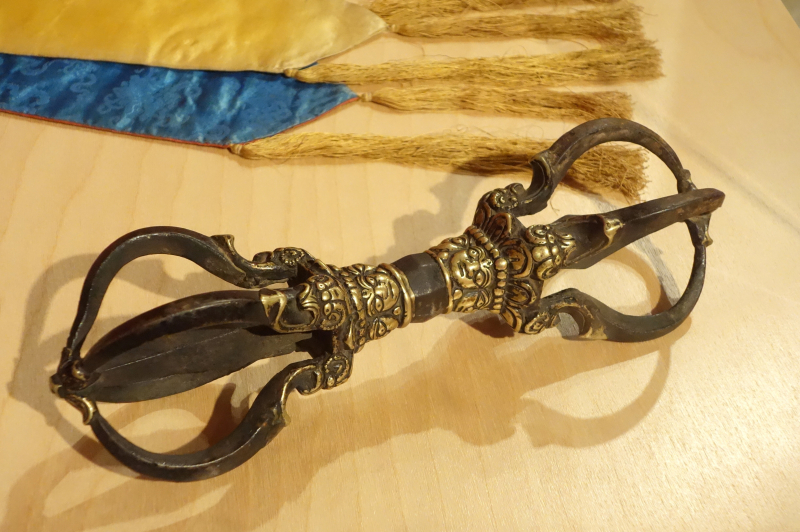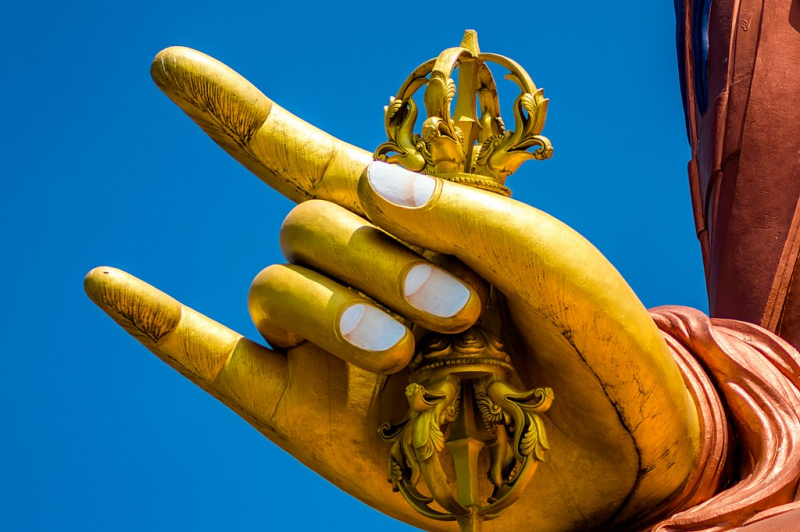Vajra (Dorje)

In Buddhism, the Vajra, also known as the Dorje in Tibetan, is a symbol representing both indestructibility and the thunderbolt, signifying enlightenment's unshakable nature. Shaped like a scepter or a diamond, the Vajra embodies strength, purity, and enlightenment's impenetrable essence.
The Vajra is a tool used by Buddhist deities and practitioners to transform ignorance into wisdom. It signifies the indivisible nature of reality and is often associated with the realization of ultimate truth and the attainment of enlightenment.
In Buddhist rituals, the Vajra is held in ceremonies and meditations, symbolizing both the method and wisdom needed to achieve spiritual enlightenment. It is believed to be unbreakable, representing the unyielding nature of truth and the awakened mind.
Moreover, the Vajra represents the unstoppable force of compassion. Just as a thunderbolt can swiftly cut through obstacles, compassion, represented by the Vajra, can effortlessly conquer ignorance and bring about profound transformation.
In Tibetan Buddhism, the Vajra is one of the most important ritual objects, used in ceremonies to evoke spiritual power and clarity. Its symbolic significance extends to the balance between compassion (symbolized by the bell) and wisdom (symbolized by the Vajra), highlighting their inseparable unity on the path to enlightenment.
















